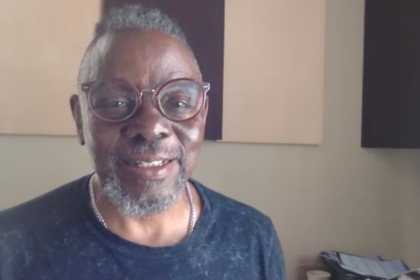Ever watched two equally qualified leaders tackle the same challenge and get wildly different results? Or wondered why your boss takes an approach that would never work for you? The secret isn’t just experience or education — it’s personality.
Personality shapes how we communicate, make decisions, handle stress, and inspire others. It’s the invisible force behind our leadership style that can either amplify our impact or sabotage our best intentions.
The personality puzzle in leadership
Your personality isn’t just about whether you’re the life of the office party or prefer quiet time with spreadsheets. It runs much deeper, influencing how you process information, communicate with your team, and navigate conflicts.
Think of personality as your brain’s default operating system. Sure, you can run different programs when needed, but your system has built-in preferences that feel most natural and require less energy.
Understanding this operating system gives you critical insights into your leadership strengths and blind spots. That self-awareness is pure gold — research consistently shows that leaders who understand their natural tendencies outperform those who don’t.
But here’s where most personality discussions get it wrong — there’s no “ideal” leadership personality. Every personality type brings unique advantages to leadership roles, and what matters most is leveraging your natural strengths while developing strategies to address potential weaknesses.
The extraversion spectrum and leadership dynamics
Where you fall on the extraversion-introversion spectrum dramatically shapes your leadership approach. But forget the myths that extraverts make better leaders — both ends of this spectrum bring valuable talents to the table.
Extraverted leaders often excel at building networks, generating enthusiasm, and thinking aloud. Their energy can rally teams through challenging times, and they typically communicate with confidence. They’re natural champions who can articulate vision in inspiring ways.
However, extraverted leaders may sometimes talk more than they listen, make decisions without sufficient reflection, or inadvertently dominate meetings. At their worst, they might create environments where the loudest voice wins rather than the best idea.
Meanwhile, introverted leaders bring thoughtful analysis, deep listening, and measured responses. They often excel at one-on-one mentoring and create space for others to contribute. Their calm presence can be stabilizing during crises, and they typically think before speaking.
The challenge for introverted leaders lies in making their voice heard, especially in organizations that reward dynamic presence. They may need to push themselves to provide enough verbal direction or public recognition to their team.
The most effective leaders — regardless of their natural position on this spectrum — develop flexibility. Extraverted leaders practice intentional listening and create reflection time before big decisions. Introverted leaders prepare talking points for important meetings and schedule recovery time after high-interaction days.
How your decision-making wiring impacts your leadership
Some leaders rely primarily on logical analysis when making decisions, while others give significant weight to values and interpersonal impact. Neither approach is inherently better, but they create dramatically different leadership environments.
Logical-driven leaders bring clarity, consistency, and objectivity to their teams. They excel at establishing metrics, maintaining fairness, and making tough calls without getting emotionally entangled. Their teams typically know exactly where they stand and what constitutes success.
The risk for these leaders comes in potentially overlooking the human element. They may underestimate how emotions impact productivity or miss opportunities to build loyalty through empathy and personal connection.
Values-driven leaders excel at creating cohesive teams united by shared purpose. They typically invest in understanding individual team members’ motivations and create psychologically safe environments where people feel personally valued. Their decisions factor in both business outcomes and human impact.
Their potential blind spot? Sometimes avoiding necessary conflict or making exceptions that compromise efficiency. At their worst, they might prioritize harmony over accountability.
The strongest leaders develop both capacities — making logical decisions while remaining attuned to values and relationships. They understand that the most effective solutions account for both facts and feelings.
The structure versus flexibility leadership divide
Some leaders thrive on structure, planning, and predictability, while others excel in adaptability, innovation, and spontaneity. This fundamental difference shapes everything from how meetings are run to how projects are managed.
Structure-oriented leaders create clarity through reliable systems, clear expectations, and detailed planning. Their teams benefit from consistent processes, well-defined roles, and dependable follow-through. These leaders often excel at risk management and quality control.
The challenge comes when rigidity prevents adaptation or when process takes precedence over outcomes. At their worst, these leaders might create bureaucratic environments where innovation struggles to thrive.
Flexibility-oriented leaders bring creativity, adaptability, and opportunistic thinking to their organizations. They typically excel during change initiatives or in dynamic market conditions. Their teams often enjoy autonomy and appreciate the space to experiment with new approaches.
Their challenge? Sometimes creating too much ambiguity or changing direction so frequently that teams struggle with execution. Without sufficient structure, accountability may suffer and projects may remain perpetually unfinished.
The most effective leadership combines elements of both approaches — establishing enough structure to ensure clarity and execution while maintaining enough flexibility to adapt and innovate when circumstances change.
Stress response patterns that make or break leadership
How leaders respond to pressure dramatically impacts their effectiveness during challenging times. Some become hyper-focused under stress, while others become scattered. Some withdraw, while others become more forceful.
Understanding your stress response helps you recognize when you’re operating in “emergency mode” rather than at your best. Common patterns include:
- The over-controller who responds to uncertainty by tightening their grip, potentially micromanaging their team just when autonomy and creativity are most needed.
- The conflict-avoider who postpones difficult conversations or decisions when tensions rise, creating a leadership vacuum precisely when clear direction is essential.
- The emotional reactor whose anxiety or frustration becomes visible to their team, potentially amplifying stress throughout the organization.
- The withdrawer who becomes less accessible during crises, leaving their team without necessary guidance when they most need support.
- The most resilient leaders develop awareness of their stress patterns and implement specific strategies to counterbalance these tendencies. This might include scheduled reflection time, designated advisors who can provide perspective, or specific stress-management techniques.
By recognizing your default stress response, you can develop intentional practices that help you lead effectively even when circumstances are challenging.
Turning self-awareness into leadership growth
Knowledge about your personality becomes truly valuable when translated into action. Here’s how to leverage personality insights for leadership development:
Start by identifying your genuine strengths. These aren’t just things you’re good at, but capacities that feel energizing and natural. Leadership roles that align with these strengths will feel sustainable rather than depleting.
Then honestly assess your blind spots. These aren’t flaws to eliminate but areas where you’ll need intentional strategies. Consider how these tendencies might impact your team and what systems you might implement to create balance.
For instance, if you know you tend to avoid difficult conversations, you might establish regular feedback sessions with clear talking points to ensure performance issues are addressed promptly.
If your analytical nature sometimes misses emotional undercurrents, you might partner with team members who excel at reading the room or schedule specific check-ins focused on team morale rather than just metrics.
The goal isn’t personality overhaul but strategic complementing. You can build a leadership approach that leverages your natural talents while implementing specific practices to address potential weaknesses.
Building teams that balance personality differences
Understanding personality differences doesn’t just improve individual leadership — it transforms team dynamics. By recognizing that different team members may process information, make decisions, and communicate in fundamentally different ways, you can turn potential conflicts into complementary strengths.
Consider creating teams with diverse personality types who can balance each other’s tendencies. The visionary who generates exciting ideas benefits from partnership with the detail-oriented planner who can turn concepts into executable steps.
Recognize that what looks like resistance or difficulty might actually be a different but equally valid approach. The team member who asks challenging questions isn’t necessarily being negative — they might be helping identify potential problems before they occur.
When conflicts arise, personality awareness provides language to depersonalize differences. “We’re approaching this differently because we naturally focus on different aspects of the situation” creates space for more productive resolution than assuming bad intentions.
The strongest teams aren’t comprised of similar personalities but of different types who respect each other’s perspectives and recognize the unique value each approach brings to complex challenges.
The leadership fingerprint that only you can create
The most authentic leadership doesn’t come from imitating others or following rigid formulas. It emerges when you align your approach with your natural strengths while implementing specific practices to address potential blind spots.
This personalized leadership style — what we might call your leadership fingerprint — can’t be replicated because it’s shaped by your unique combination of traits, experiences, and values.
Developing this authentic approach requires ongoing reflection rather than a one-time assessment. How are your natural tendencies serving you well? Where might they create limitations? What specific practices could help you expand your range without trying to become someone else?
The most respected leaders aren’t those who fit a particular personality profile but those who have developed deep self-awareness that informs intentional leadership practices. They leverage their natural strengths while implementing specific strategies to address potential weaknesses.
In this way, what might initially seem like personality limitations can become the foundation for your most distinctive leadership contributions. The key isn’t changing who you are but becoming more strategic about how you lead.
Your personality isn’t just a set of preferences — it’s potentially your greatest leadership asset. By understanding your natural tendencies and developing complementary practices, you can create a leadership approach that feels authentic, sustainable, and uniquely effective.
So rather than asking whether your personality is right for leadership, the better question might be how your particular personality creates unique opportunities to lead in ways that others cannot. The answer to that question just might be your leadership superpower.


















